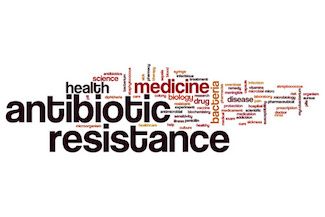Antimicrobial Stewardship in the Era of Multidrug-Resistant Infections
Here are some strategies to consider for optimal utilization.

Infectious disease clinicians face an escalating challenge: multidrug-resistant (MDR) infections that render traditional antimicrobial treatments ineffective. The emergence of MDR pathogens such as carbapenem-resistant Enterobacteriaceae (CRE) and methicillin-resistant Staphylococcus aureus (MRSA) is outpacing the development of new antibiotics.1 Antimicrobial stewardship (AMS) is no longer just an initiative—it’s a necessity.
AMS programs aim to optimize antimicrobial use, ensuring the best patient outcomes while slowing resistance. But stewardship isn’t just about restricting antibiotics—it’s about precision, surveillance, and education. Additionally, as healthcare institutions navigate antimicrobial stewardship efforts, they must also balance operational efficiency, including Healthcare Revenue Cycle Management, to sustain long-term investments in infection control and diagnostic innovations. Let’s explore targeted strategies that can make AMS more effective in real-world clinical settings.
Focusing on Gram-Negative Resistance
Multidrug resistance is particularly concerning in gram-negative bacteria, which have evolved complex defense mechanisms, including efflux pumps and enzyme production that deactivate antibiotics.2 A prime example is Klebsiella pneumoniae carbapenemase (KPC)-producing bacteria.
Rapid diagnostics such as polymerase chain reaction (PCR) and matrix-assisted laser desorption/ionization (MALDI-TOF) mass spectrometry can identify resistant strains faster than traditional cultures.3 Yet, accessibility remains a barrier. Investing in rapid diagnostics is not optional; it’s imperative.
The Role of Stewardship: Rethinking Empiric Therapy
AMS programs are essential for curbing unnecessary antibiotic use, but they must evolve beyond restriction policies to provide clinicians with actionable guidance.4
A significant challenge is empiric therapy—how do we balance early, aggressive treatment with antimicrobial stewardship principles? Overuse of broad-spectrum agents like piperacillin-tazobactam and meropenem contributes to resistance, yet under-treating sepsis risks mortality.5
A strategy gaining traction is “diagnostic-driven de-escalation.”6 By leveraging biomarkers and microbial surveillance, we can personalize therapy instead of relying on a one-size-fits-all approach.
Key Strategies for Effective Stewardship
Pharmacokinetics and pharmacodynamics (PK/PD) are underutilized in AMS but can be game-changers in optimizing dosing regimens.7 Extended and continuous infusions of beta-lactams, for example, improve time-dependent killing while reducing toxicity.
Rather than just focusing on which antibiotic to use, how it is administered is just as critical.
The success of an ASP hinges not just on guidelines but on clinician engagement. While data-driven restrictions are necessary, AMS teams must shift from being "the antibiotic police" to trusted collaborators.4
At a Boston teaching hospital, a stewardship team embedded real-time consultation within the EMR system, offering personalized recommendations rather than blanket restrictions. The result? A 22% reduction in broad-spectrum antibiotic use without negatively impacting outcomes.8
Stewardship works best when it’s integrated into clinical workflow rather than imposed as an external control.
Surveillance and Monitoring: Predicting Resistance Before It Spreads
One of the most underutilized AMS strategies is predictive resistance mapping.9 By analyzing hospital antibiograms alongside regional resistance data, we can anticipate trends before they escalate.
At a Midwestern academic center, researchers developed a machine-learning model that predicts resistance patterns based on patient demographics and prior antibiotic exposure.9 Their findings? Certain hospital units were unknowingly driving resistance cycles due to persistent empiric overuse of fluoroquinolones.
Surveillance isn’t just about tracking resistance—it’s about preventing its emergence.
Education and Awareness: Changing Culture, Not Just Guidelines
The biggest barrier to AMS isn’t just lack of resources—it’s clinician mindset. Many physicians were trained in an era where more antibiotics meant better care.4
Changing this culture requires tailored education. Instead of generic lectures, AMS teams at a California hospital introduced case-based learning sessions, where physicians discussed real patient scenarios and debated antibiotic choices.
Challenges and Future Directions: Beyond Antibiotics
Despite AMS efforts, resistance will continue unless we explore alternative therapies.7
Exciting developments include:
- Bacteriophage therapy: Targeted viral treatment for MDR infections.7
- Monoclonal antibodies: Enhancing immune response against resistant bacteria.9
- Microbiome-based therapies: Restoring gut flora to reduce C difficile infections.5
Yet, challenges remain. Will regulatory bodies fast-track approval for these alternatives? Will hospitals invest in AMS when short-term costs seem high? Healthcare institutions must balance antimicrobial stewardship with broader financial and operational priorities, including healthcare revenue cycle management, to sustain these long-term innovations.
AMS is no longer just about antibiotic restrictions—it’s about precision, collaboration, and forward-thinking strategies. Infectious disease clinicians play a pivotal role in shaping the future of antimicrobial use.
To fight multidrug resistance, we need to refine how we diagnose, prescribe, and educate. The future of infectious disease management isn’t just about new antibiotics—it’s about using the ones we have, smarter.
References
Centers for Disease Control and Prevention (CDC). Antibiotic Resistance Threats in the United States, 2019. U.S. Department of Health and Human Services, CDC; 2019. Available at: https://www.cdc.gov/drugresistance/biggest-threats.html. Accessed February 14, 2025.
Tacconelli E, Carrara E, Savoldi A, et al. Discovery, research, and development of new antibiotics: the WHO priority list of antibiotic-resistant bacteria and tuberculosis. Lancet Infect Dis. 2018;18(3):318-327. doi:10.1016/S1473-3099(17)30753-3
Patel R. MALDI-TOF mass spectrometry: transformative proteomics for clinical microbiology. Clin Chem. 2015;61(1):1-10. doi:10.1373/clinchem.2014.221770 2015;61(1):1-10.
Barlam TF, Cosgrove SE, Abbo LM, et al. Implementing an antibiotic stewardship program: guidelines by the Infectious Diseases Society of America and the Society for Healthcare Epidemiology of America. Clin Infect Dis. 2016;62(10):e51-e77. doi:10.1093/cid/ciw118
Kumar A, Roberts D, Wood KE, et al. Duration of hypotension before initiation of effective antimicrobial therapy is the critical determinant of survival in human septic shock. Crit Care Med. 2006;34(6):1589-1596. doi:10.1097/01.CCM.0000217961.75225.E9
Kim J, Patel R, Lin S. The impact of rapid diagnostic testing and antimicrobial stewardship on the management of bloodstream infections. Clin Infect Dis. 2019;68(3):514-520. doi:10.1093/cid/ciy558
Tängdén T, Pulcini C, Aagaard H, et al. Unmet needs in optimizing extended infusion and combination therapy in antimicrobial stewardship. Clin Microbiol Infect. 2020;26(7):849-856. doi:10.1016/j.cmi.2019.11.012
MacVane SH. Antimicrobial stewardship in the intensive care unit: can bedside diagnostic testing move us forward? J Clin Microbiol. 2017;55(7):2002-2010. doi:10.1128/JCM.00320-17
Queenan AM, Bush K, Livermore DM. Carbapenemases: the versatile β-lactamases. Clin Microbiol Rev. 2020;33(3):e00179-19. doi:10.1128/CMR.00179-19
